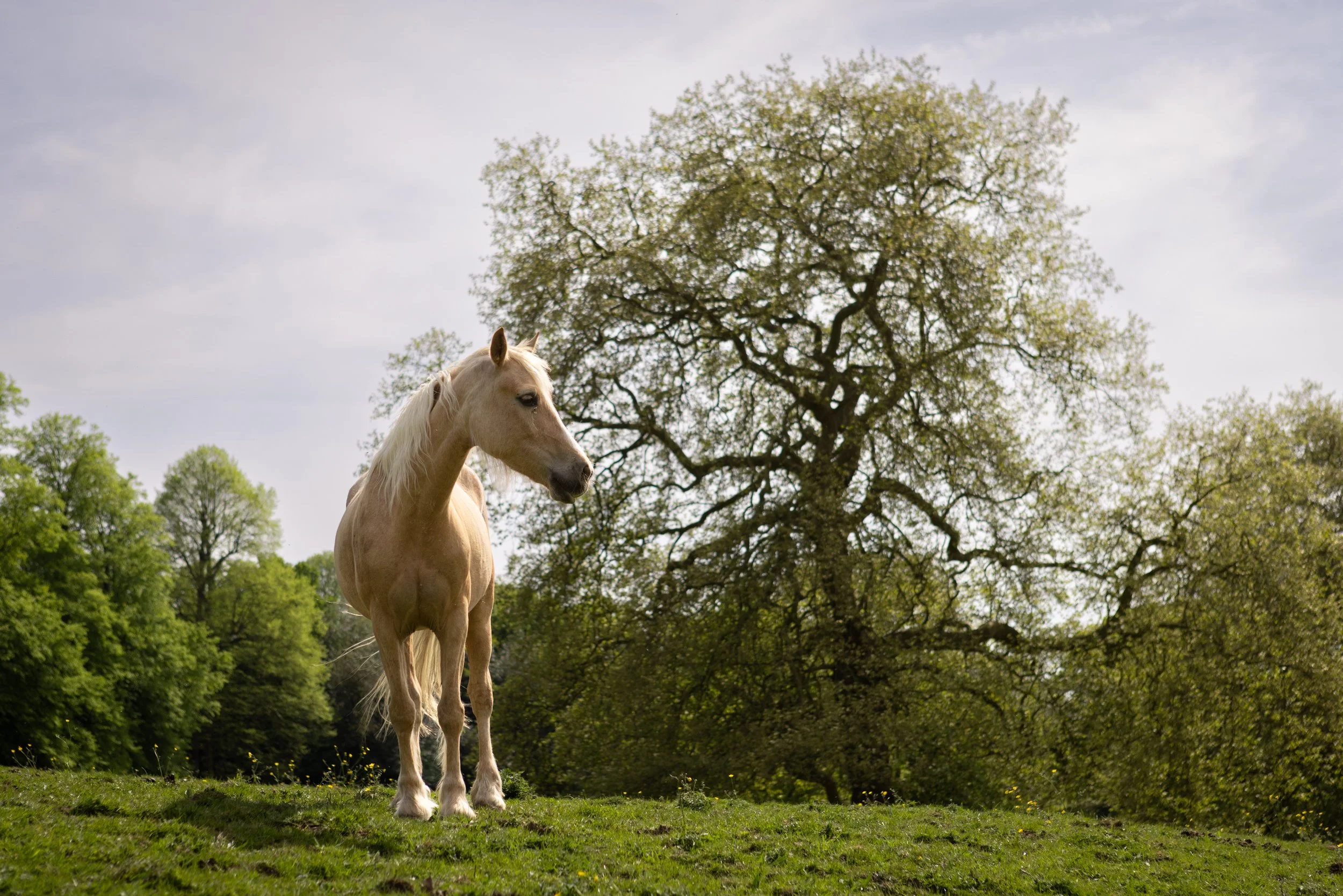Heartfulness & Horses
Heartfulness describes the quality of connectedness to our hearts and with it, a deeply felt awareness of who we truly are at our core. It expands upon mindfulness – the practice of consciously bringing awareness to the present moment, our environment and sensations whilst noticing the contents of the mind without judgement – bringing us beyond awareness and into an embodied space from which we can engage with others, and ourselves, with warmth.
Emotional wounding often initiates the protective mechanism of closing our hearts to avoid further hurt; many of us have learned to live with our hearts garrisoned rather than risk the vulnerability of opening ourselves up to receiving others fully. It could be said that the biggest tragedy is, in doing so, we close our hearts to our own expansiveness. Heartfulness reconnects us to tender vulnerability, compassion and joy, bringing us back towards wholeness.
Ancient wisdom
The ancient wisdom of this vital organ has been held within spiritual practice and language for millennia. We speak of “heartbreak” when connection is lost, of feeling “heartened” by hope, and knowing “in our heart” when something is right. Our innate knowing of the heart’s significance in emotional and interpersonal connection and our sense of Self is something we are are born with; as a species entirely dependent on primary caregivers for the first several years of life an inherent ability to connect through our hearts is critical for our survival. But, if experience has taught us it is safer to live with hearts closed, rarely is it enough to simply want to be more heartful – we need some help to get there. With hearts between five and ten times the size of our own and their mastery of non-verbal communication, horses invite us to drop into centred states of being through their mere presence. Enduring as this wisdom is, science is only beginning to help us understand the mechanisms at play and the relationship between psychological and emotional states and our heart’s physiology, along with its influence on others around us.
What science reveals: heart rate variability and heart coherence
Heart rate variability (HRV) describes the oscillations between each beat of the heart. A measure of the heart’s adaptability in attunement with the inhalations and exhalations of our breath, a high degree of fluctuation indicates flexibility and balance between the sympathetic and parasympathetic branches of the nervous system. In turn, a balanced nervous system supports our ability to remain adaptable, agile and calm in times of stress. Our emotions and physiology are therefore intertwined in a symbiotic loop, with stress, anxiety and trauma impacting heart rate variability, and poor HRV affecting our feelings and capacity for rational thought. Conversely, the harmony of heart, breath and mind is known as “heart coherence”, a state which promotes physical and emotional wellbeing.
The HeartMath Institute have been studying heart coherence and other phenomena since 1991. Their discoveries, some involving horses, not only enlighten us to the effects of heart coherence on our personal wellbeing, but its impact on those around us. Our human hearts emit an electromagnetic field strong enough to be measured by an electrocardiogram placed directly on the skin – and detected by sensitive magnetometers up to 3 feet from all directions of the body. These electromagnetic fields are conductors of information like heart rate variability, so we are in constant receipt and transmission of our own and others’ physiological and emotional states. HeartMath Institute calls this energetic communication.
The horse-human heart connection
Horses’ electromagnetic fields emanate 5 feet beyond their bodies. Pilot studies have shown human and horse heart rate variability to synchronise in each other’s presence, indicating the mutual transference of emotional states. What’s more, horses’ hearts function within the very low frequency (VLF) range more readily and with greater power than our own – and diminished VLF power has been linked to PTSD, inflammation and arrhythmia in humans. As frequencies are transmitted through energetic communication, it is possible a horse’s very low frequency power may influence the very low frequency oscillations of any human within range of their electromagnetic field.
Heart coherence and heartfulness are therefore not only supportive of physiological and emotional wellness but critical to interconnectedness, and by extension, communal and societal healing. Being with horses and dropping into our heart space brings this biological alchemy and its deep restorative properties into consciousness, manifesting a felt sense of connection – of being seen and heard and held in non-judgement by a compassionate other.
References
Van der Kolk, B. A. (2015). The Body Keeps the Score: Brain, Mind, and Body in the Healing of Trauma. New York, New York. Penguin Books.
McCraty, R. (2015). SCIENCE OF THE HEART: Exploring the Role of the Heart in Human Performance Volume 2. California. HeartMath Institute.
NARM Inner Circle Presents: NARM and Heartfulness with Dr. Laurence Heller and Brad Kammer. https://podcasts.apple.com/gb/podcast/transforming-trauma/id1496190024?i=1000591808268
The Horse-Human Heart Connection by Ellen Gehrke PhD https://blissfulexistencehealingacres.com/wp-content/uploads/2021/09/BEHA-Research_The-Horse-Human-Heart-Connection-1.pdf
Shaffer, F. & Ginsberg, J. P. (2017). An Overview of Heart Rate Variability Metrics and Norms. Frontiers in Public Health, 5. https://www.frontiersin.org/journals/public-health/articles/10.3389/fpubh.2017.00258/full

